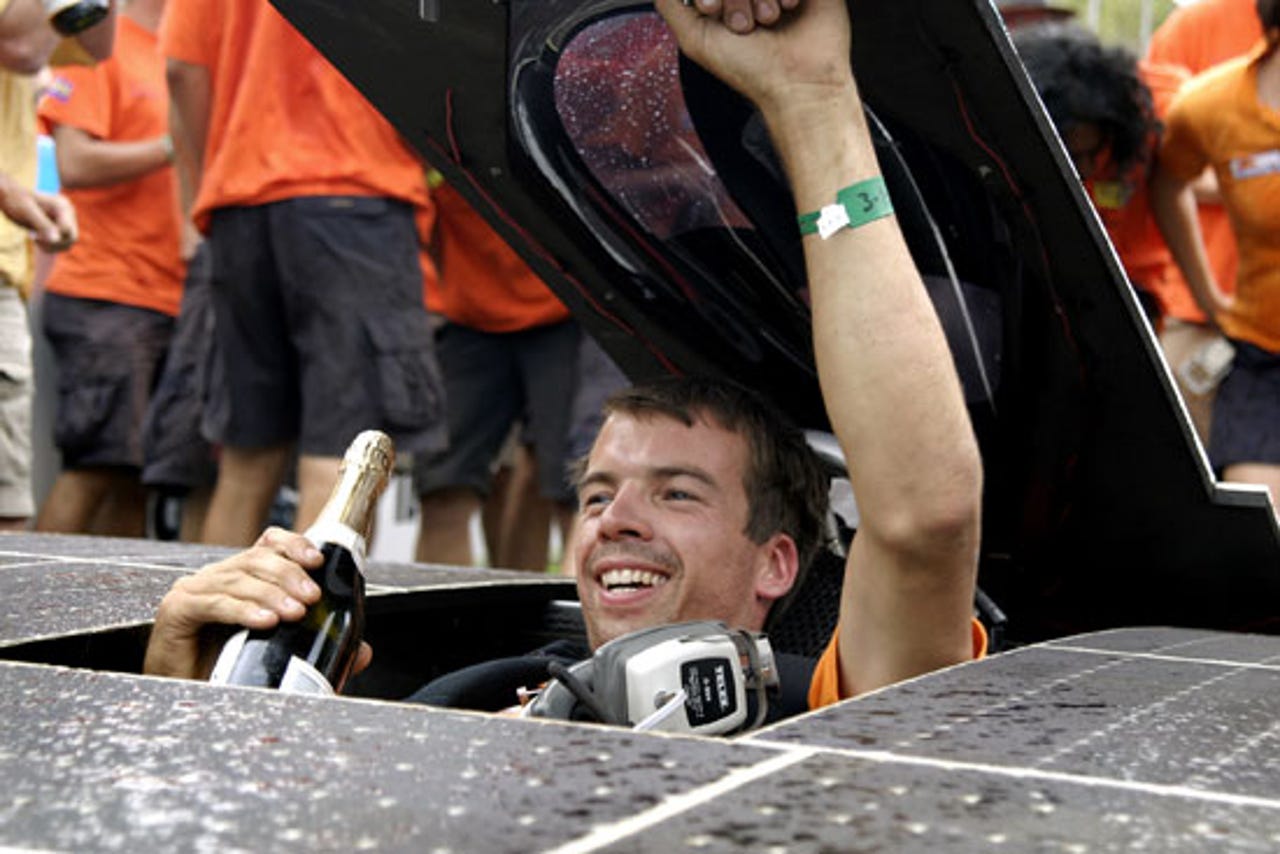Photos: Solar racing across the outback


solar winner
Job Zan De Kieft of the Netherlands drove the Nuna 3 to victory in the 2005 Panasonic World Solar Challenge, a 3,000-kilometer solar car race. His vehicle set a record crossing the outback of Australia from Darwin to Adelaide in 29 hours, 11 minutes of travel time, finishing on Sept. 28, 2005. The car averaged 63.8 mph.
light your engines
Here, the Nuna 3, from the Nuna Solar Car team of the Netherlands, begins the race on Sunday, Sept. 25.
Taiwan's entry
The entry from Southern Taiwan University, just getting under way, shows what a tight fit the solar cars can be.
Race map
The drivers headed due south across the rugged terrain of the Australian outback.
scrutineering
Before the race, all of the cars were inspected by a team of "scrutineers," who check vehicle safety, acceleration, braking and adherence to regulations. Read the Leeming Sungroper scrutineering report for details.
solar energy
This driver soaks up his own solar energy while his team works on the solar cells.
ECO Bus
No, it's not solar-powered, but this H2 Eco Bus is an adjunct to the World Solar Challenge fleet. It's one of a number of Greenfleet-class vehicles that are demonstrating hybrid, custom and concept technologies. The bus, which is used in Perth, Western Australia, runs on hydrogen fuel cells. Its exhaust is steam.
Honda
The Greenfleet classification lets automakers show off energy-saving and environmentally friendly vehicles such as this Smart model from DaimlerChrysler.
Michigan
The University of Michigan's car, winner of the 2,500-mile North American Solar Challenge in July, is now taking on world-class competition. The North American "rayce" began in Austin, Texas, and finished in Calgary, Alberta, 11 days later. Michigan's team overtook the University of Minnesota's car in the final miles.
Aurora
The Aurora Vehicle Association of Melbourne, Australia, recently set the record for the longest solar car trip: 13,054 kilometers in 24 days. The Aurora team's daily blog is documenting the current race.
A team from Australia's Leeming Senior High School entered its Leeming Sungroper solar car into this year's competition.
MIT
Like the Michigan crew, the team from MIT brings experience from the North American Solar Car Challenge. During a cloudy, rainy day in that race, the team moved into first place by driving more slowly and conserving energy.